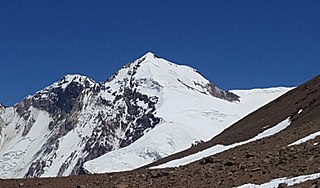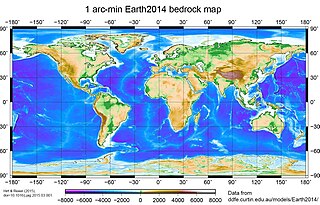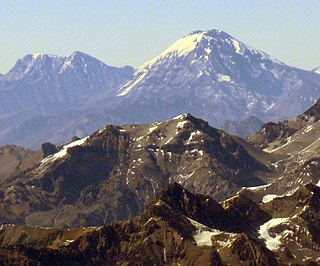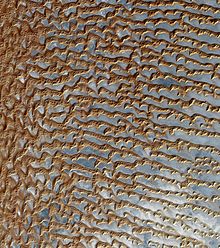
A digital elevation model (DEM) or digital surface model (DSM) is a 3D computer graphics representation of elevation data to represent terrain or overlaying objects, commonly of a planet, moon, or asteroid. A "global DEM" refers to a discrete global grid. DEMs are used often in geographic information systems (GIS), and are the most common basis for digitally produced relief maps. A digital terrain model (DTM) represents specifically the ground surface while DEM and DSM may represent tree top canopy or building roofs.

NASA WorldWind is an open-source virtual globe. According to the website, "WorldWind is an open source virtual globe API. WorldWind allows developers to quickly and easily create interactive visualizations of 3D globe, map and geographical information. Organizations around the world use WorldWind to monitor weather patterns, visualize cities and terrain, track vehicle movement, analyze geospatial data and educate humanity about the Earth." It was first developed by NASA in 2003 for use on personal computers and then further developed in concert with the open source community since 2004. As of 2017, a web-based version of WorldWind is available online. An Android version is also available.

Volcán Marmolejo is a 6,108 m (20,039 ft) high Pleistocene stratovolcano in the Andes on the border between Argentina and Chile. It is located 9 km (6 mi) NNE of the active San José volcano, and is the southernmost 6,000 m (19,685 ft)-plus peak in the world. The Argentine portion is within the Argentinean protection area of Provincial Reserve for Multiple Use and Natural Recreation Manzano / Portillo de Piuquenes. It is on the border of two provinces: Argentinean province of Mendoza and Chilean province of Cordillera. Its slopes are within the administrative boundaries of the two cities: Argentinean city of Tunuyán and the Chilean commune of San José de Maipo.

Cerro Walther Penck is a massive complex volcano in the Andes, located in northwestern Argentina, Catamarca Province, Tinogasta Department, at the Puna de Atacama. It is just southwest of Ojos del Salado, the highest volcano in the world. Walther Penck itself is perhaps the third highest active volcano in the world.

The Shuttle Radar Topography Mission (SRTM) is an international research effort that obtained digital elevation models on a near-global scale from 56°S to 60°N, to generate the most complete high-resolution digital topographic database of Earth prior to the release of the ASTER GDEM in 2009. SRTM consisted of a specially modified radar system that flew on board the Space Shuttle Endeavour during the 11-day STS-99 mission in February 2000. The radar system was based on the older Spaceborne Imaging Radar-C/X-band Synthetic Aperture Radar (SIR-C/X-SAR), previously used on the Shuttle in 1994. To acquire topographic data, the SRTM payload was outfitted with two radar antennas. One antenna was located in the Shuttle's payload bay, the other – a critical change from the SIR-C/X-SAR, allowing single-pass interferometry – on the end of a 60-meter (200-foot) mast that extended from the payload bay once the Shuttle was in space. The technique employed is known as interferometric synthetic aperture radar. Intermap Technologies was the prime contractor for processing the interferometric synthetic aperture radar data.

TerraSAR-X, is an imaging radar Earth observation satellite, a joint venture being carried out under a public-private-partnership between the German Aerospace Center (DLR) and EADS Astrium. The exclusive commercial exploitation rights are held by the geo-information service provider Astrium. TerraSAR-X was launched on 15 June 2007 and has been in operational service since January 2008. With its twin satellite TanDEM-X, launched 21 June 2010, TerraSAR-X acquires the data basis for the WorldDEM, the worldwide and homogeneous DEM available from 2014.
Ramada is a group or massif in Argentina. It has a height of 6,384 metres (20,945 ft). It's located at Calingasta Department, San Juan Province, at the Cordillera de la Ramada.

Cerro Las Tórtolas is a peak at the border of Argentina and Chile with an elevation of 6,145 metres (20,161 ft) metres and located at the Central Andes. It is on the border of the Argentinean province of San Juan and Chilean province of Elqui. Its slopes are within the administrative boundaries of Argentinean city of Iglesia and Chilean commune of Vicuña.

Alto San Juan is a peak at the border of Argentina and Chile with an elevation of 6,148 metres (20,171 ft) metres. Alto San Juan is part of the Central Andes. Its territory is within the Argentinean protection area of Provincial Reserve for Multiple Use and Natural Recreation Manzano / Portillo de Piuquenes. Its slopes are within the administrative boundaries of the two cities: Argentinean city of Tunuyán (Mendoza) and Chilean commune of San José de Maipo (Cordillera).

Pico Polaco is a mountain located in Argentina with a height of 5,950 metres (19,521 ft). It is located at Calingasta Department, San Juan Province, at the Cordillera de la Ramada.

El Ermitaño is a peak in Chile with an elevation of 6,146 metres (20,164 ft) metres located at Puna de Atacama. It is on the border of the Chilean provinces of Chañaral and Copiapó Along with Cerro Peña Blanca, lies on the southern rim of the Wheelwright Caldera.

Cerro La Mesa or La Mesa or Cerro de la Mesa is a mountain in the Cordillera de la Ramada range of the Andes, in Argentina. It has a height of 6,180 metres (20,276 ft). La Mesa means table in Spanish. The name of the mountain comes its flat and long summit ridge. Despite the dry climate of the area, there are significant glaciers flowing down the southern and the eastern flank of the mountain. Its slopes are within the administrative boundaries of the Argentinean city of Calingasta, Province of San Juan.

Yayamari is a mountain in the Vilcanota mountain range in the Andes of Peru, about 6,049 metres (19,846 ft) high. It is situated in the Cusco Region, Canchis Province, Pitumarca District, and in the Quispicanchi Province, Marcapata District. Yayamari lies northeast of Sibinacocha, north of the lake named Amayuni and northwest of Huila Aje and Condoriquiña.

A global relief model, sometimes also denoted as global topography model or composite model, combines digital elevation model (DEM) data over land with digital bathymetry model (DBM) data over water-covered areas to describe Earth's relief. A relief model thus shows how Earth's surface would look like in the absence of water or ice masses.

Ameghino is a mountain in Argentina. It has a height of 5,950 metres (19,521 ft).

Vallecitos is a mountain subrange/area in Argentina. It has a height of 6,120 metres (20,079 ft). It is located at Antofagasta de la Sierra, Catamarca Province, at the Puna de Atacama.
Laguna Blanca is a peak in Argentina with an elevation of 6,012 metres (19,724 ft) metres. Laguna Blanca is the highest peak of Sierra de Laguna Blanca, a range within Puna de Atacama, a high plateau of the Andes. It is within the protected area "Natural Provincial Reserve and Biosphere of Laguna Blanca". Cerro Laguna Blanca is located within the territory of the Argentinean province of Catamarca. Its slopes are within the administrative boundaries of two Argentine cities: Antofagasta de la Sierra and Villa Vil.
Volcan del Viento also called Gendarme Argentino 2 is a remote mountain in Argentina with an elevation of 6,028 metres (19,777 ft) metres. Volcan del Viento is within the following mountain ranges: Argentinean Andes, Puna de Atacama and Andean Volcaninc Belt. It is located at the Argentinean province of Catamarca. Its slopes are entirely within the territory of the Argentinean city of Fiambalá.

Negro Pabellón is a peak in Mendoza, Argentina with an elevation of 6,090 metres (19,980 ft) metres. Negro Pabellón is within the Central Andes and is the highest at Cordón de las Delicias. Its territory is within the Argentinean protection area of Provincial Reserve for Multiple Use and Natural Recreation Manzano / Portillo de Piuquenes. Its slopes are within the administrative boundaries of the Argentinean city of Tunuyán.




















